With the 2021-22 Washington Capitals season halfway done following Thursday’s 4-3 loss to the Boston Bruins, the results so far have been positive in many ways, but there are also some troubling aspects to their game with 41 more games to go before the postseason.
Injuries and absences have really put a damper on Washington’s ability to show its true identity this season, with only one player – Alex Ovechkin – playing in all of the club’s first 41 games. The Capitals’ other superstar forwards have missed significant time due to injuries and COVID protocol, with Nicklas Backstrom only appearing in eight games following an offseason rehab and COVID protocol, and T.J. Oshie with three separate injuries being able to skate in only 18.
Although Washington has slipped to fourth in the tough Metropolitan Division race with a 2-4-2 start to this calendar year, the Capitals are still 12 points up on the ninth-place Detroit Red Wings for a playoff spot with half a season to go. The Caps are seventh overall in points in the NHL with 53 points and a 22-10-9 record. Considering the team has used 11 rookies this season – the most the club has used in a full season since 2013-14, the last time Washington missed the playoffs – the team is in a good position despite the roster churn.
Here’s what’s gone right – and wrong – for the Capitals so far this year, and how the team can look to make a run at a second Stanley Cup title this spring.
Alex Ovechkin’s Stellar Play
While even the most optimistic forecast for Ovechkin was to close the gap on some of the top goal-scorers in NHL history this year, instead, he has put himself back in the Hart Trophy conversation for the first time since he won the award 2012-13 with a stellar performance, all despite turning 36 in September.
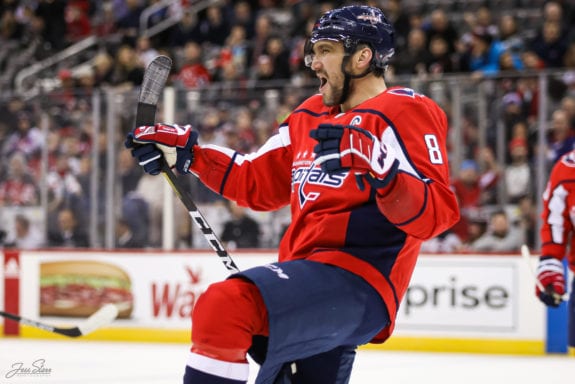
(Jess Starr/The Hockey Writers)
Following Thursday’s game, Ovechkin leads the NHL in not only goals (27) but also points (56), and he is tied for ninth in assists (29). Not only is he also the only Cap to play in all 41 games this year, but he also has had a hand in 41 percent of the team’s goals this season – even though he said earlier this month he had an injury that bothered him “for a little bit.”
Without Ovechkin’s strong play, it’s hard to imagine the Capitals anywhere near a playoff spot, let alone being comfortable in one. He has also been the one consistency in a season that has been anything but. Without several of his key linemates for the bulk of the year, Ovechkin has been able to put himself at a 114-point pace, which would best his top career total, not to mention put him on track for the first 100-point season for him since 2009-10.
While fans are used to Ovechkin’s goal-scoring prowess – and he is on pace for 54, which would be his best since 2008-09 – he also has already eclipsed his assist totals for each of the last two seasons and is on pace to record his first 50-assist season since 2010-11.
While Washington’s season has been anything but consistent, Ovechkin’s play has been, and his renaissance is one of the reasons the Capitals aren’t looking up at the playoff pack at this point.
Evgeny Kuznetsov’s Return to Form
The Capitals’ other Russian mainstay has also been playing well this season, as Evgeny Kuznetsov put up a better than the point-per-game pace in the first half of his campaign, notching 40 points in 38 games.
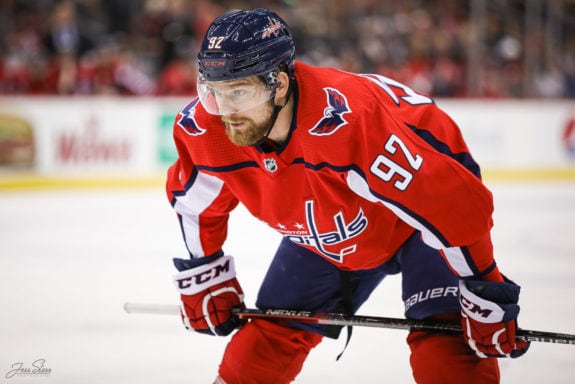
(Jess Starr/The Hockey Writers)
One of the benefactors to Ovechkin’s resurgence, Kuznetsov is also perhaps playing his best hockey since the Capitals’ run to the Stanley Cup in 2018. Certainly, his play has shown a bit of streakiness even this season, but he is still on pace to threaten his career-high in goals of 27 with 13 so far this season, and his assist total is already well past last year’s.
For a player who seemed to be on the trading block or even expansion fodder this past offseason, Kuznetsov’s return to form has been a welcome development for the Capitals, especially with the revolving door on the top two lines this season. Kuznetsov has been able to slide into Backstrom’s role as a top center for most of the season and has shown much more of a drive to compete than he has in years.
Whether or not Kuznetsov was sparked by a chance to represent Russia or the Olympics for the first part of the year, or the realization that he was becoming a marginal forward with Washington with spotty effort and results, the Capitals aren’t as serious a Cup contender without production from Kuznetsov. With him playing near his best, they are a much more dangerous squad, particularly whenever they return to full strength.
His resurgence has put Washington among the league’s top goal-scoring teams despite the shuffling lineups, and a strong second half would also put the Capitals in the mix for one of the top seeds in the Eastern Conference. And if Kuznetsov can show some of what he has shown so far in the postseason, it certainly makes the Capitals much more of a playoff threat.
Youth Movement
Washington’s solid first half wouldn’t have been possible without some strong contributions from its recent draft picks, as several have stepped in and made their presence known with solid play in filling the roles of missing veterans.
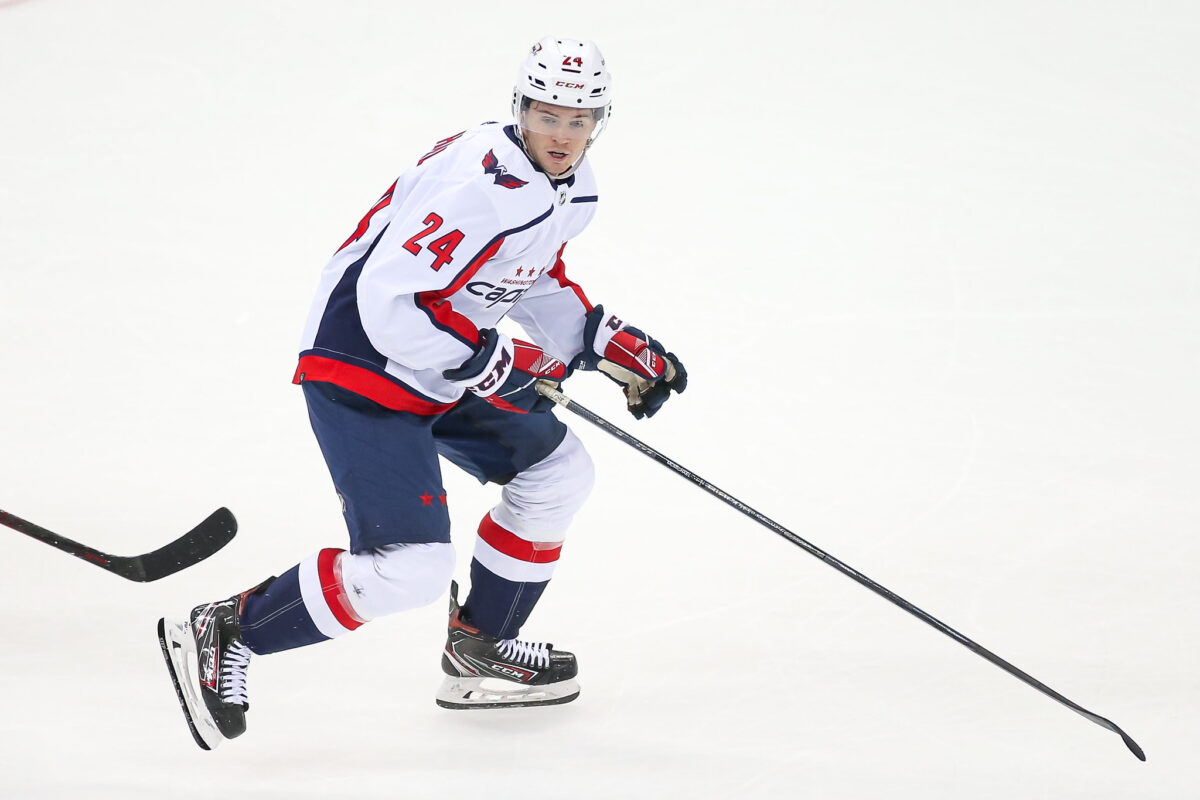
Connor McMichael, the team’s first-round pick in the 2019 draft, has stepped into a regular role with the Capitals this season, appearing in 38 games for Washington and adding five goals and seven assists. McMichael, who in the preseason was in a battle to even make the roster, has missed just three games in the first half of the season and provided consistent play despite just turning 21 last week.
Defensively, Martin Fehervary has also been able to help Washington on the blue line, as the 22-year-old is consistently logging over 20 minutes a night and has chipped in three goals and three assists while also appearing in 38 games for the Capitals.
Along with McMichael and Fehervary, two other recent Capitals draft picks, Brett Leason and Aliaksei Protas, also have appeared in 29 games apiece to help fill in for Washington and gain experience.
In total, eight rookies have made their NHL debuts for the Capitals this season, and despite being thrown into prominent roles with injuries and absences, they have performed well in on-the-job training for Washington’s future.
Goaltending Concerns
On the flip side, one of Washington’s biggest question marks entering the season has been the goaltending, and halfway through the season, it still remains to be seen if the current tandem of Ilya Samsonov and Vitek Vanecek are going the team’s two netminders come to the Stanley Cup playoffs.

Samsonov, the team’s heir apparent since Braden Holtby’s departure after the 2019-20 season, has struggled to take the role and had an uneven effort this season. After a rough start to the year, Samsonov was terrific in the team’s West Coast trip in November but has regressed back to subpar in the last few weeks. Overall, his 2.77 goals-against average and .903 save percentage are adequate but also skewed by a strong sample size in a pair of games in California with back-to-back shutouts.
Vanecek doesn’t quite have the upside of Samsonov but delivers a more consistent performance in net. His 2.57 goals-against and .909 save percentage are better than his partner’s, but he also at times has seemed to struggle when given the chance to take the starting role. Vanecek has Washington’s two wins in 2022, shutting down the New York Islanders and holding the fort against the Winnipeg Jets, but it is unclear if he will be able to become Washington’s top netminder if Samsonov continues to be inconsistent.
While Zach Fucale had an impressive start to his NHL career with a shutout in Detroit and only a single goal allowed in three games, his outing against the Boston Bruins where he allowed four goals in 27 minutes provided a reality check that he probably isn’t the answer, at least not this season.
Related: Capitals’ Goaltending Picture Cloudy After Samsonov’s Struggles
With no one really taking the starting role, Washington likely will have to use the cap space provided with Anthony Mantha’s extended absence to acquire a veteran netminder at the trade deadline, as it seems unlikely the answer to Washington’s issues in net is currently in the system. While both young netminders have performed admirably in goal, it appears if Washington wants a true chance at another Stanley Cup title, they can’t stand pat with the current tandem. The Capitals gambled and lost with that last season in a first-round loss to Boston, it seems unlikely barring a major change they will do so again.
Capitals coach Peter Laviolette eluded to the inconsistency in net following Thursday’s loss, telling reporters, “we are looking for somebody to grab that and find some consistency with that.” (from ‘Capitals fall late on a night of thundering hits in Boston,’ Washington Post, Jan. 21, 2022).
Power Play Outage
With one of the league’s top goal-scoring teams, it’s bizarre how ineffective the team’s power-play unit has become. Washington currently ranks 30th in the NHL with the extra-man, only better than the Montreal Canadiens and Arizona Coyotes, the two teams at the bottom of the league in goal production. The Capitals have only scored 18 of its 136 goals this year on the power play – and also allowing five short-handed goals to boot.
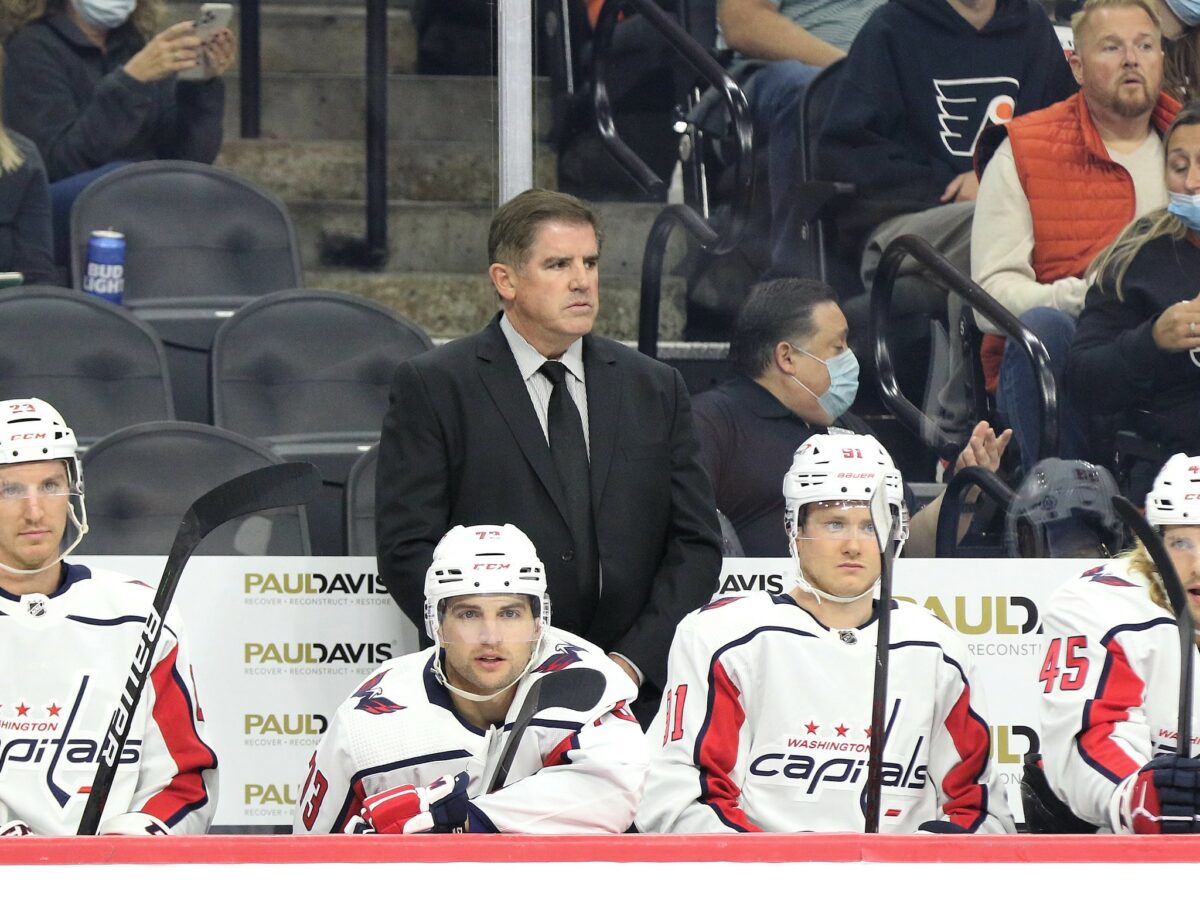
(Amy Irvin / The Hockey Writers)
While Washington has had one of the league’s most feared power plays in years past, the current version has become stale and predictable. In Thursday night’s loss, three of Washington’s extra-man advantages failed to produce even a single shot on net, and one of the main reasons the Caps couldn’t earn a point in a tight game.
The Capitals had success in the past by keeping skaters moving, forcing defenders to be on their toes and constantly in motion, but the recent versions of the extra-man has the attack being more static. The lack of movement by the Capitals’ power-play unit is allowing the opponent’s penalty killers to clog the shooting lanes and get sticks and bodies in the way disrupt Washington’s passing. As a result of the Capitals’ lack of success with the extra man, teams are also able to take more liberties in disrupting scoring chances, knowing that the Caps’ power play isn’t likely to make them pay.
Even stranger with the Capitals’ power-play unit is that Ovechkin has been very productive, scoring seven power-play goals this season – the 10th best in the NHL this season. However, the rest of his teammates have combined for just 11, which would be the fewest in the league if you took out Ovechkin’s goals.
In tight games, particularly in the postseason, an effective power play could mean the difference between advancing or going home, so the Capitals need to unveil a different-looking attack before the regular season is out. The current version is static, stale and predictable, and becoming even less effective as the season progresses – especially with the talent and production the team currently has. Washington offensively is effective by keeping their opponents skating around – which is a key aspect missing when they have the extra man right now.
Return to Consistency
While this aspect of their game is more out of their control, the fact the Capitals have remained a very competitive club with all the injuries and absences is fairly remarkable.
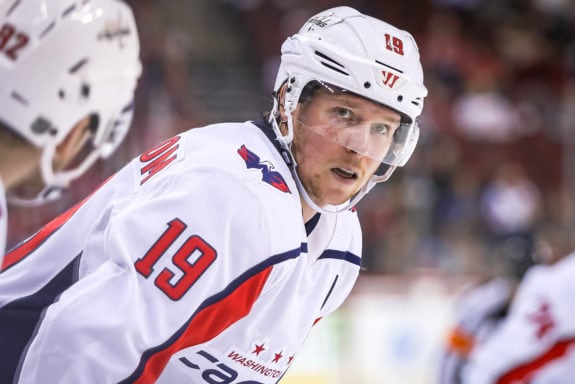
Backstrom finally lit the lamp for the first time Thursday, with his lack of production due to missing games with an injury followed by a COVID protocol absence, and has appeared in just eight games so far. Oshie was put on injured reserve for the third time this season Thursday and appeared in just 18 of 41 games so far this season.
At times, Washington’s lineup has seemed more worthy of a preseason tilt than an important game in the regular season, and Thursday was no different. Despite missing their top two defensemen in John Carlson (COVID protocol) and Dmitry Orlov (suspension), as well as Nick Jensen to injury midway through the game, the Capitals still hung around and nearly stole a point or two on the road against a Bruins team that has been largely playing well this month.
However, while Washington has been able to stay above the fray despite the adversity, clearly, a similar second half would not likely bode well for the Capitals’ playoff future. While the Caps seem set to qualify again barring a major collapse down the stretch, certainly avoiding a tough first-round matchup wouldn’t help their chances of success in the postseason that has eluded them since lifting the Stanley Cup in Las Vegas in 2018.
Overall, considering all that’s happened with Washington in the first half of the 2021-22 campaign, things have gone fairly well. However, it also seems unlikely that success will continue without getting improvements in other areas.
